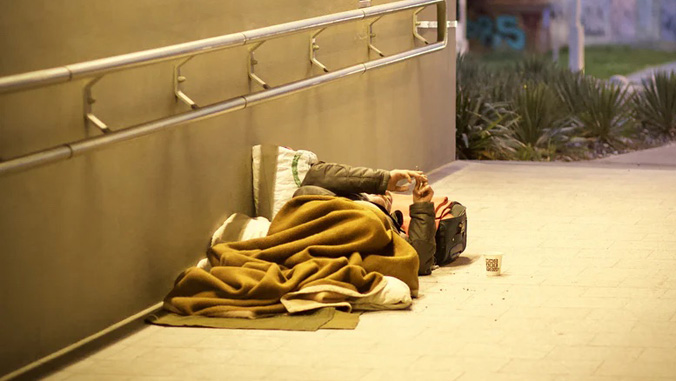
To help address homelessness in Hawaiʻi and on University of Hawaiʻi campuses, UH is participating in the annual Point in Time (PIT) Count, a national census of the number of people experiencing homelessness on a single night. This year, the date of the PIT Count is Monday, January 25, and for the first time, the university is proactively urging students at UHʻs 10 campuses to participate. They are being asked to take an anonymous survey that will gather the count and important data. UH is partnering with Partners in Care, Oʻahu’s Continuum of Care, which has been overseeing the PIT Count in Hawaiʻi since 2003.
“This partnership represents an important step toward ending homelessness in our community,” said Anna Pruitt, UH Mānoa research associate and affiliate faculty member in the UH Mānoa Department of Psychology. “Through this partnership, we are able to leverage university resources to meet community needs, which, in turn, can be used to improve campus life.”
The PIT Count has previously included individuals experiencing unsheltered homelessness (sleeping in cars, on beaches and sidewalks) and sheltered homelessness (sleeping in emergency shelters).
This year, Partners in Care has expanded efforts to count individuals who may have been missed in previous years, specifically college students, and those who may be at-risk for homelessness and food insecurity, for example, those who are “couch surfing.” It’s an effort to expand prevention services and tailor existing services to extant needs. Pruitt has been working with Associate Professor Jack Barile and graduate research assistants Rachel Marshall and Marissa Minami with his Ecological Determinants Lab in the Department of Psychology on this project.
Partners in Care will report the data to the U.S. Department of Housing and Urban Development. At the local level, Partners in Care, in collaboration with UH researchers, will analyze the survey responses and draft a report for the community. This information will be used by planning committees to develop new programming or expand existing resources to new areas. In particular, findings will be returned to the UH community along with suggestions on how to reduce housing and food insecurity among students. Any responses from the survey regarding neighbor islands will be shared with Bridging the Gap, the Continuum of Care for Hawaiʻi Island, Maui and Kauaʻi.
“We hope this project will extend beyond a description of housing and food insecurity in our community and will be used to develop interventions and systematic approaches to addressing these issues,” said Pruitt. “In particular, I hope that these results can inform prevention approaches that keep housing insecure students from falling into homelessness. As the research tells us, the best way to solve homelessness is to prevent it.”
Resources for individuals experiencing homelessness
If you or someone you know is experiencing homelessness, food insecurity, or domestic violence, the City and County of Honolulu has a Homelessness Help Card (PDF) with contact information and resources.
Aloha United Way is also available for assistance and can be reached by calling 211.

